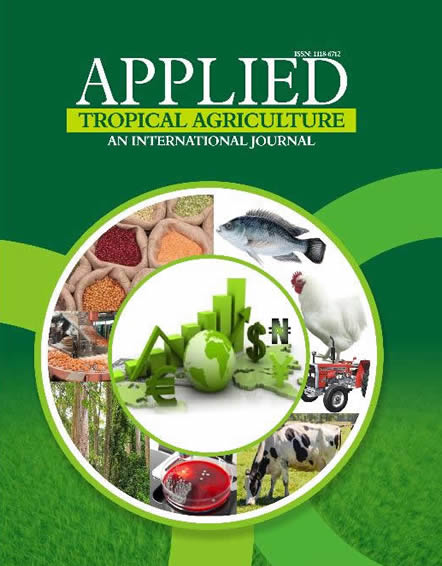Sixteen upland rice genotypes comprising established cultivars and some interspecific Oryza sativa x O. glaberrima
selections were established in the screenhouse under conditions that simulate ten different moisture-centred environments
to study genotype and genotype-by-environment response of grain production. Data were collected on grain weight per
plant (GWPP) and other traits and used to determine genotype stability under moisture stress. Linear response to
environment (moisture stress) constituted 80.4% of the total sum of squares while G and GE jointly accounted for a low but
significant 19.6%. The GGE analysis classified the two environments into two groups with the rainfed environment as the
most discriminating. A few of the environments overlapped indicating similarity in their ability to represent moisture stress
condition and discriminate among rice genotypes. Correlation coefficient of GWPP across environments was significant
with root dry weight (0.972), shoot dry weight (0.986), spikelets number per panicle (0.961), grain weight per panicle
(0.967), 100-grain weight (0.695) and spikelet fertility (0.759). Two genotypes, ITA 150 and NERICA 1 (WAB 450-1-B-38-
HB), in order of preference, were identified as having a combination of high and stable grain weight under controlled
moisture. Genotypes 15 (IRAT 170) had high yield under adequate moisture condition but was also unstable.
Key words: Oryza, upland rice GGE, stability, drought, grain yield
PAPER TITLE :SOIL MOISTURE SIMULATION FOR GENOTYPE-BY-ENVIRONMENT INTERACTION ANALYSIS OF GRAIN PRODUCTION IN UPLAND RICE
APPLIED TROPICAL AGRICULTURE | VOLUME 22 NUMBER 1 2017
Paper Details
- Author(s) : Nassir, A.L.*, Adewusi, K.M. and Olagunju, S.O.
- Abstract:


